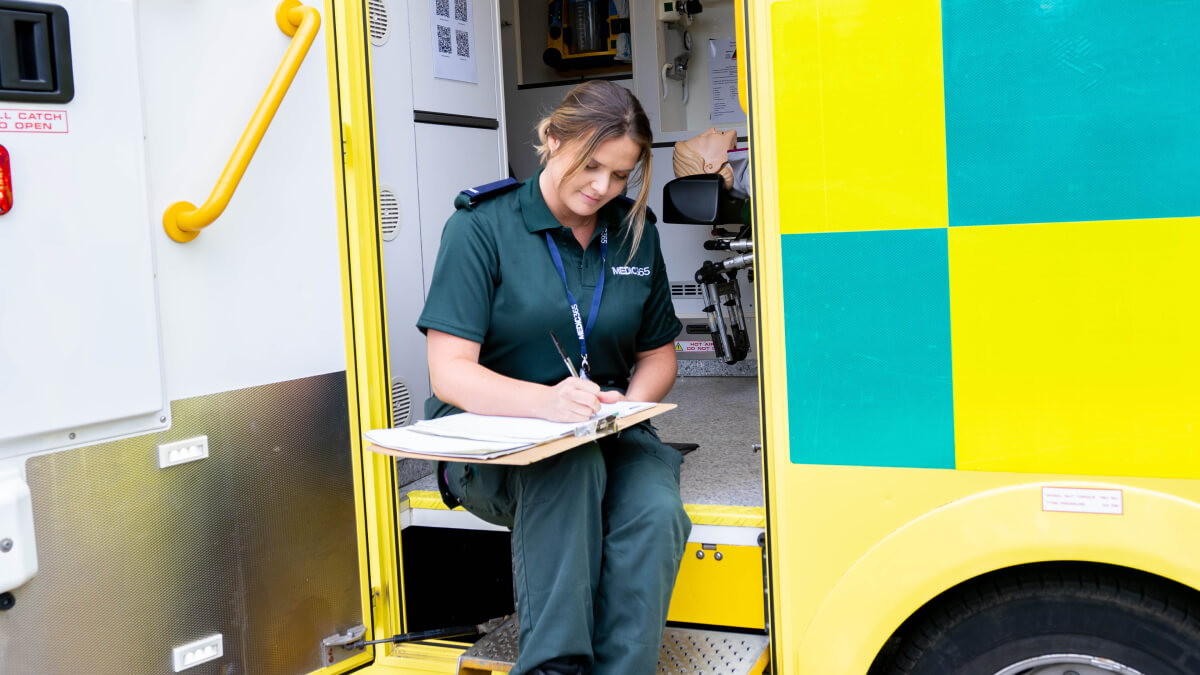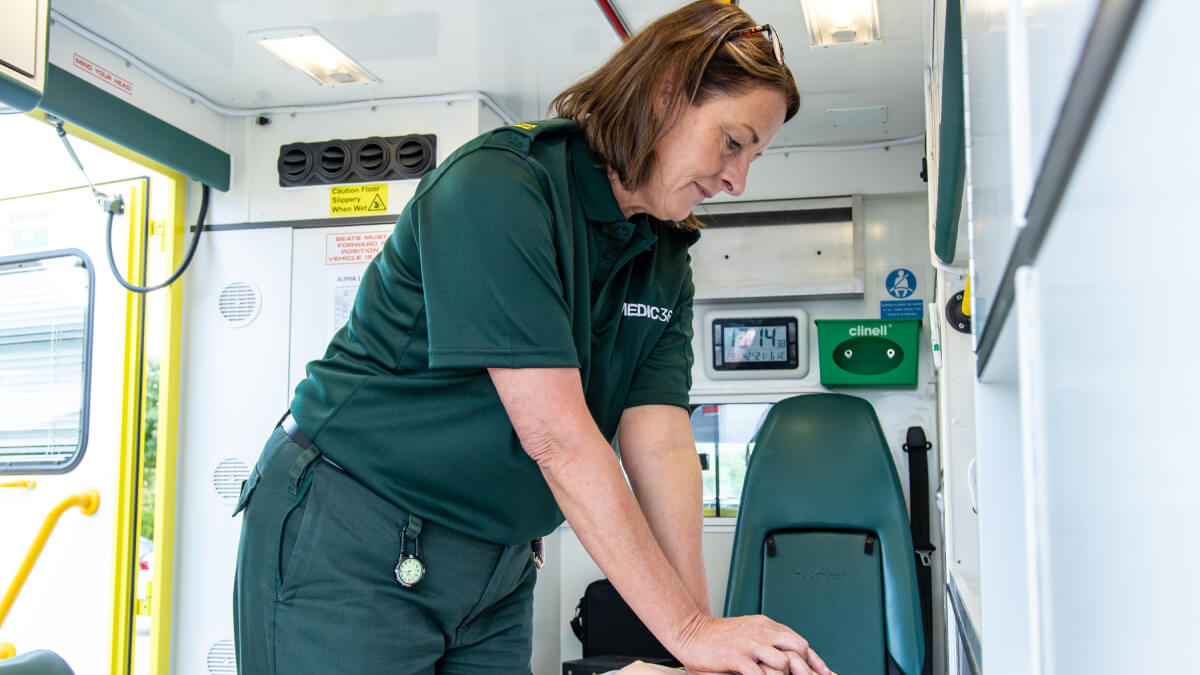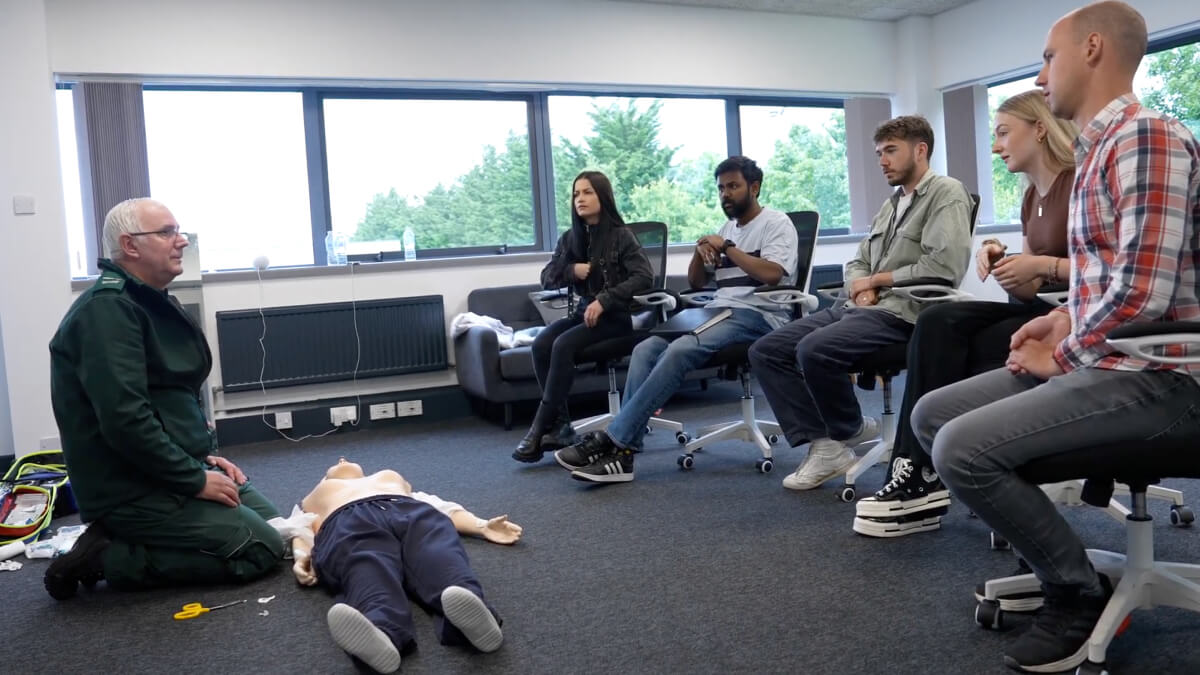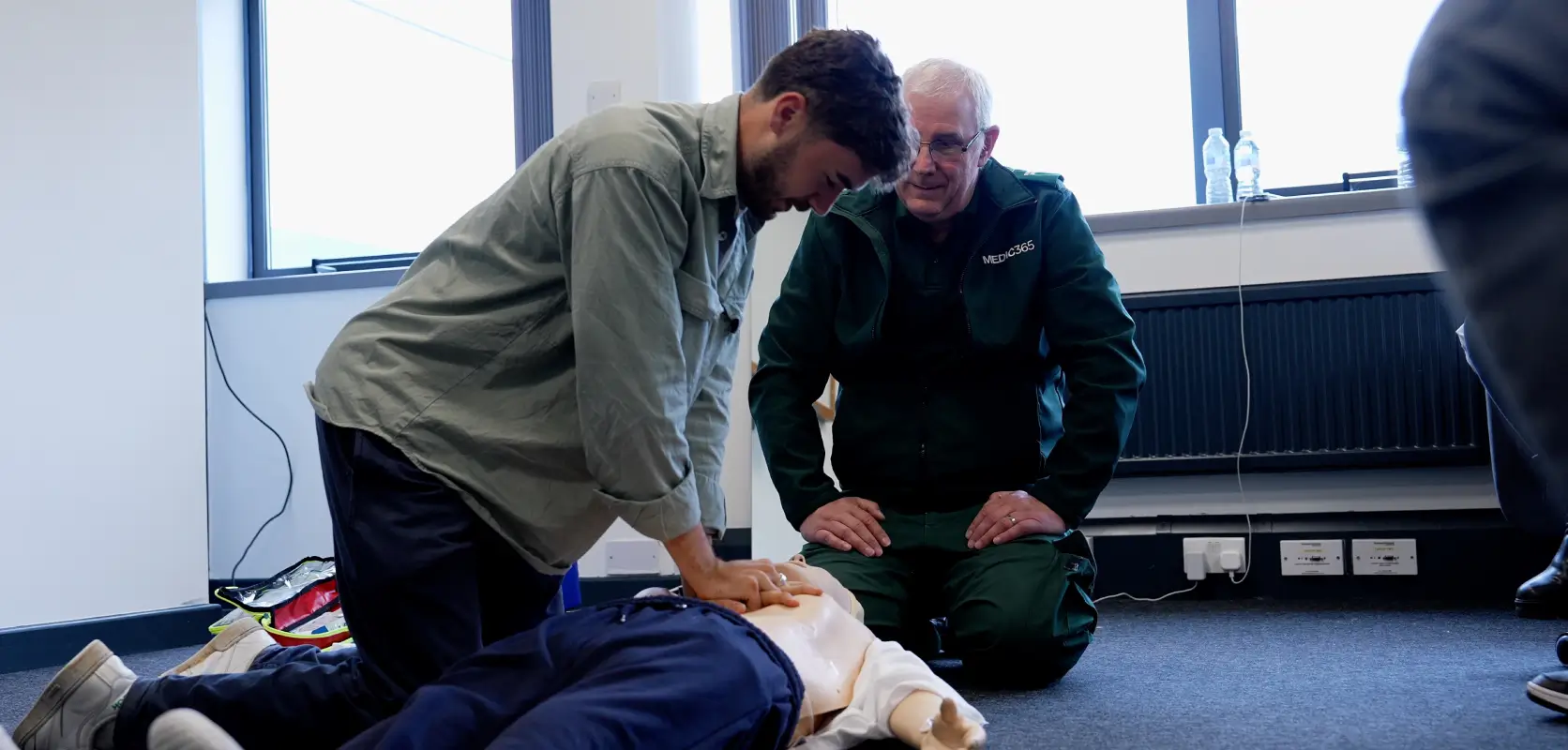When we hear the word ‘shock,’ many of us might think of a surprise or the jolt from touching something electrical. However, in the medical world, shock has a completely different and far more serious meaning. In this article, we’re focusing entirely on physiological shock – a life-threatening condition that requires immediate attention.
Understanding the signs and symptoms of shock can significantly improve how you respond to someone in a medical emergency. Whether you’re at home, at work, or out in the community, knowing what to look for could genuinely save a life. The team at Medic 365 have decades of experience in handling medical emergencies, from frontline paramedic work to training the next generation of first aiders. We’re sharing our expertise to help you feel more confident and prepared.
Shock is among the many topics covered in our training courses, designed to give you the knowledge and confidence to act when it matters most. Don’t leave your emergency response skills to chance – book onto one of our courses today.
What Is Shock: Everything You Need To Know
Physiological shock is what happens when your organs and tissues aren’t receiving the blood flow and oxygen they need to function properly. Without prompt treatment, this kind of shock can quickly become life-threatening.
This comprehensive guide will walk you through everything you need to know about recognising, understanding, and responding to shock. Here’s what we’ll cover:

Types Of Shock
Understanding the different types of shock helps us recognise what might be happening and respond appropriately. There are four main categories, each with distinct characteristics and causes.
Obstructive Shock
Obstructive shock happens when something physically blocks blood flow through the body’s major vessels or heart. Think of it like a traffic jam in the body’s road system – blood can’t get where it needs to go because the route is blocked. Common causes include blood clots in the lungs (pulmonary embolism) or fluid around the heart that prevents it from pumping effectively.
Cardiogenic Shock
This type occurs when the heart itself can’t pump blood effectively around the body. The heart muscle may be damaged or weakened, often following a heart attack.
Distributive Shock
Distributive shock happens when blood vessels throughout the body become too wide or dilated, causing blood pressure to drop dramatically. The most common form is septic shock, which occurs during severe infections. The body’s blood vessels essentially lose their ability to maintain proper pressure.
Hypovolemic Shock
This is the most common type of shock and occurs when the body loses too much blood or fluid. Whether from severe bleeding, dehydration, or burns, there simply isn’t enough volume in the circulatory system to maintain adequate blood flow to vital organs.

Diagnosing Shock
Whilst it’s important for everyone to understand the signs of shock (which we’ll cover shortly) in order to respond appropriately, it’s the responsibility of a medical professional to formally diagnose the condition.
That said, understanding what healthcare professionals look for can help you provide better information when emergency services arrive.
Medical professionals will assess several key indicators when diagnosing shock:
- Hypotension – This means dangerously low blood pressure. When blood pressure drops too low, organs don’t receive enough blood to function properly.
- Tachycardia – A rapid heart rate as the body tries to compensate for poor circulation by pumping faster.
- Skin Changes – The skin may become pale, cool, and clammy as blood flow is redirected away from the skin to protect vital organs.
- Mental State Changes – Confusion, anxiety, or altered consciousness can occur as the brain doesn’t receive adequate oxygen and nutrients.

Causes Of Shock
Shock can develop from various underlying conditions, and understanding these causes helps us both prevent and recognise the condition. Here are some of the most common triggers:
- Blood Loss – Severe bleeding from trauma, surgery, or internal bleeding can quickly lead to hypovolemic shock. The body simply doesn’t have enough blood volume to maintain circulation.
- Infection – Serious bacterial infections can trigger septic shock, where the body’s response to infection causes widespread inflammation and blood vessel dilation.
- Allergic Reactions – Severe allergic reactions (anaphylaxis) can cause distributive shock as blood vessels dilate rapidly and blood pressure plummets.
- Heart Failure – When the heart muscle is damaged or diseased, it may not pump effectively enough to maintain adequate circulation throughout the body.
- Dehydration – Severe fluid loss from vomiting, diarrhoea, or inadequate fluid intake can lead to shock, particularly in vulnerable populations like the elderly or young children.

Symptoms Of Shock
Identifying the symptoms of shock could genuinely save your life or someone else’s. The sooner shock is recognised and treated, the better the outcome. Here’s what to look out for:
- Pulse Changes – You might notice a rapid, weak, or even absent pulse. The heart is working overtime but struggling to maintain effective circulation.
- Irregular Heartbeat – The heart’s rhythm may become erratic as it attempts to compensate for poor circulation.
- Breathing Problems – Rapid, shallow breathing is common as the body tries to get more oxygen into the system.
- Lightheadedness – Feeling dizzy or faint occurs because the brain isn’t receiving adequate blood flow.
- Eye Signs – Dilated pupils and lacklustre, unfocused eyes can indicate that the brain isn’t receiving enough oxygen.
- Chest Pain – This may occur, particularly if the shock is related to heart problems.
- Digestive Symptoms – Nausea can develop as blood flow to the digestive system is reduced.
- Reduced Urine – The kidneys produce less urine as they receive reduced blood flow.
- Thirst & Dry Mouth – The body’s attempt to conserve and obtain more fluid.
- Low Blood Sugar – This can occur as the body’s systems struggle to maintain normal function.
- Loss of Consciousness – In severe cases, the person may become unconscious.
Remember, you don’t need to see all these symptoms to suspect shock. Even a few of these signs together should prompt immediate action.

How To Treat Shock
If you’re first to the scene and think someone might be in physiological shock, you’ll need to prepare that person for medical attention from professionals. Your quick thinking and proper first aid could be the difference between life and death.
Once you’ve called the emergency services, here are the crucial steps you should follow:
- Position The Person Properly – Lay the person down and elevate their legs and feet slightly, unless you think this may cause pain or further injury. This helps blood flow back to vital organs.
- Keep Them Still – Movement can worsen shock, so encourage the person to remain as still as possible whilst waiting for help.
- Begin CPR If Necessary – If the person shows no signs of life, such as not breathing, coughing, or moving, begin CPR immediately. This is a skill covered comprehensively in our first aid course in Milton Keynes.
- Manage Their Temperature – Loosen tight clothing and, if needed, cover the person with a blanket to prevent chilling. Maintaining body temperature is crucial.
- Prevent Choking – If the person vomits or is bleeding from the mouth, and no spinal injury is suspected, turn them onto their side to prevent choking.
Remember, these are temporary measures whilst professional help is on the way. The most important thing you can do is call 999 immediately and provide supportive care until paramedics arrive.
Learning these skills properly through hands-on training gives you the confidence to act decisively. Our first aid at work courses in Milton Keynes provide exactly this kind of practical, life-saving training.

Learn More With Medic 365
Understanding shock – from recognising the different types to identifying symptoms and knowing how to respond – is knowledge that could genuinely save lives. We’ve covered the essential information about physiological shock, including its causes, symptoms, and the crucial first aid steps that can make all the difference whilst waiting for professional help.
However, reading about these skills is just the beginning. Complete confidence in emergency situations comes from hands-on training and practice. At Medic 365, our instructors bring decades of real-world emergency experience to every course. We don’t just teach theory – we provide practical, confidence-building training that prepares you for real emergencies.
Whether you’re looking to meet workplace first aid requirements or simply want to be better prepared to help in emergencies, our comprehensive training courses cover many other life-saving skills. From basic first aid to advanced resuscitation techniques, we’ll give you the knowledge and confidence to act when it matters most.
Don’t leave your emergency response skills to chance. Book a training course with Medic 365 today and take the first step towards being prepared to save lives.

